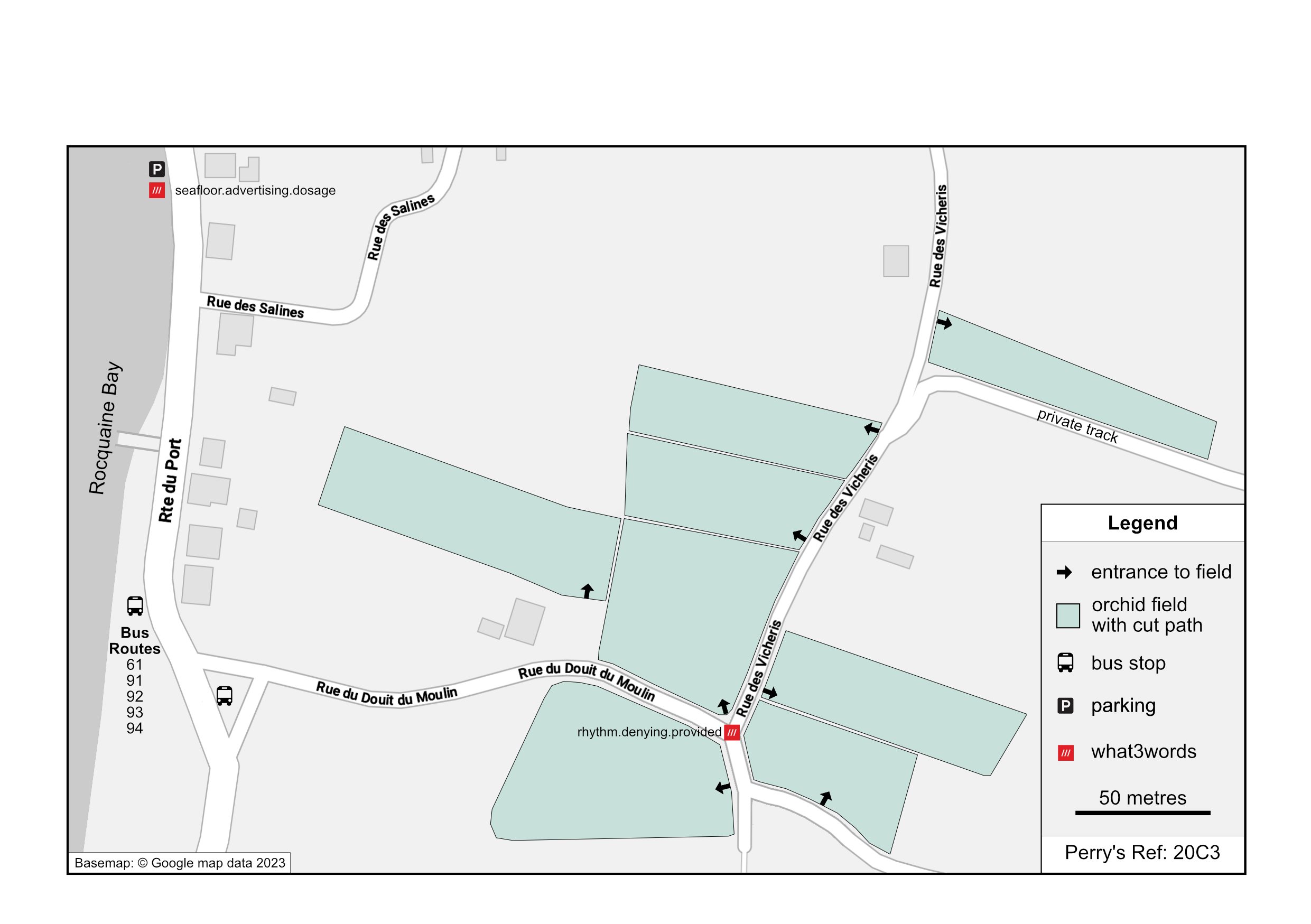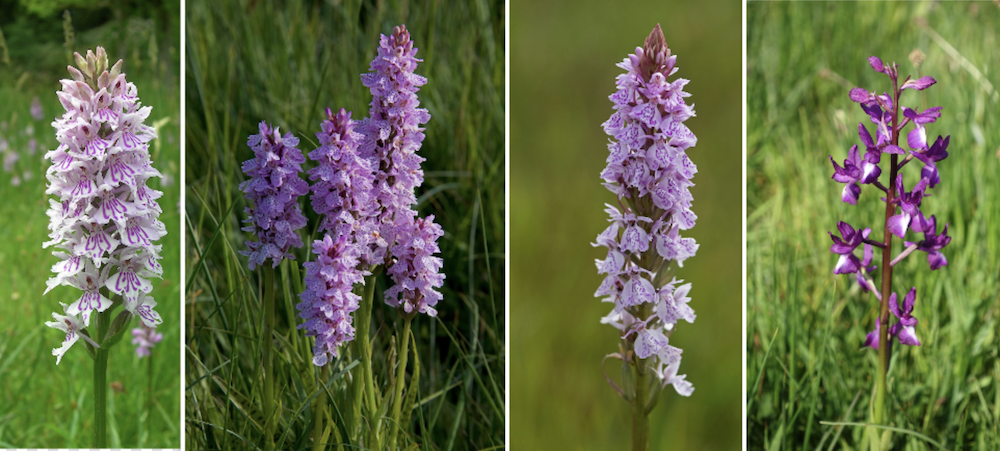


Guernsey's nature reserves have been highlighted as part of a national campaign to showcase the critical role they play in combatting climate change, boosting nature recovery, and preserving endangered species.
The National Nature Reserves Week started on 20 May and runs until 29 May.
The campaign seeks to use the nine days to encourage people to get out and about and explore nature.
The new annual ten-day celebration was timed to coincide with the Coronation, with a new ‘King’s Series’ of 25 Nature Reserves to be declared over the next five years across the UK.

Pictured: Bridget Ozanne Orchid Fields where the green shaded areas show fields with cut paths to allow public access.
It's been 71 years since the first were declared in England, while Guernsey has ten nature reserves which are all looked after by La Société Guernesiais.
The first ones were formalised in the early 1970s after La Société realised that because of increasing amounts of residential and civic development many habitats were under threat, along with rare plants and animals.
Some of the islands ten reserves are owned outright by La Société, some are leased to it for nominal rents.
In an article written by La Société's reserves team, The Bridget Ozanne Orchid Fields are described as "a Mecca" for wildlife.
They are a "group of predominantly wet-meadow fields which are managed traditionally". They are home to "many species of wetland plants", which includes four types of orchids.

Pictured (l-r): Common Spotted-orchid (Dactylorhiza fuchsii), Heath Spotted-orchid (Dactylorhiza maculata), Southern Marsh-orchid (Dactylorhiza praetermissa). All images: Anne Woodington. Loose-Flowered orchid (Anacamptis laxiflora) Image credit: Jean Dean.
The reserves team said the "fields are a mecca for a variety of invertebrates including the Common-blue butterfly where males typically have wings that are blue above with a black-brown border and a white fringe and females are usually brown above with a blue dusting and orange spots.
"Other insects include the distinctive Five-Spot Burnet moth with its black wings and five bright red spots, a large bristly fly called Tachina fera which is sometimes mistaken for a bee with its prominent broad black stripe down the centre of an otherwise orange abdomen, Common Lagoon Fly which is a hoverfly and the rhombic-shaped Leatherbug."
Plants that can be observed include the large Yellow Flag Iris, the delicate pink flowers of Ragged-robin, Cuckooflower with its delicate pink flowers, and Water Mint which has dense clusters of lilac-pink flowers during July and August.
Comments
Comments on this story express the views of the commentator only, not Bailiwick Publishing. We are unable to guarantee the accuracy of any of those comments.